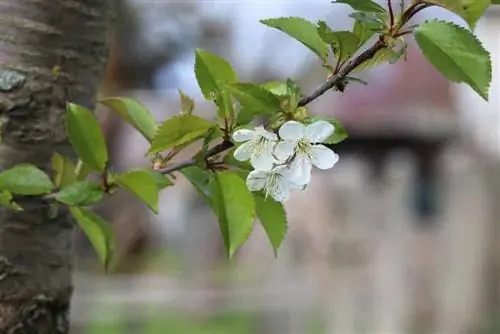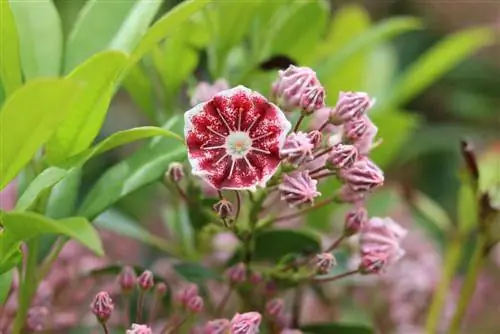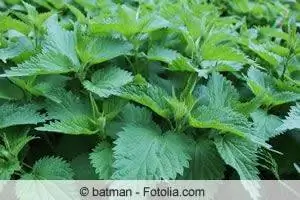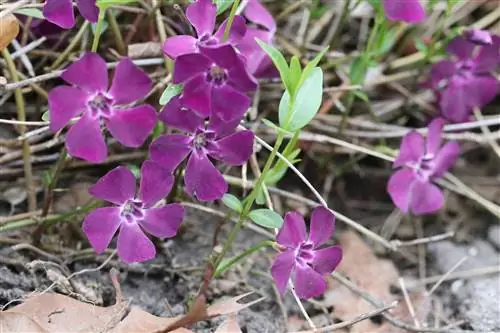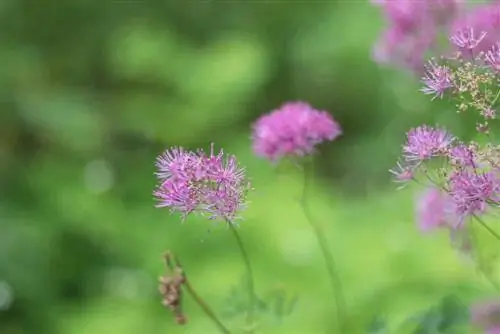- Author admin [email protected].
- Public 2023-12-17 03:39.
- Last modified 2025-06-01 06:48.
Pimpernelle, Pimpinelle, Bibernelle or small meadow button - Sanguisorba minor, as the culinary herb is botanically correctly called, can be used in a variety of ways for soups, salads and other dishes. It is also one of the traditional herbs in the famous Frankfurt Green Sauce, which is eaten with jacket potatoes. The Pimpernelle is very undemanding and can be easily cultivated both in the garden and in pots.
The Pimpernelle in a clear profile
Name: Little Meadow Button
Botanical name: Sanguisorba minor
Common names: Pimpernelle, Pimpinelle, Bibernelle, Braunelle
Genus: Meadow button (Sanguisorba)
Family: Rosaceae
Origin and distribution: originally from the Mediterranean region, Eurasia
Growth: herbaceous with upright stems and rosette of leaves
Growth height: between 20 and 100 centimeters
Flower: spherical, up to three centimeters tall
Flowering period: May to August
Leaves: small, egg-shaped leaflets with up to nine teeth
Fruits: small nuts
Fruit ripening: July to October
Annual or perennial: perennial, hardy
Use: Kitchen spice
Special features: The popular names “Pimpinelle” or “Pimpernelle” suggest a relationship with the genus of beavers (Latin: Pimpinella). However, these belong to the umbelliferous family and have no relationship to the Pimpernelle rose family.
Location and soil
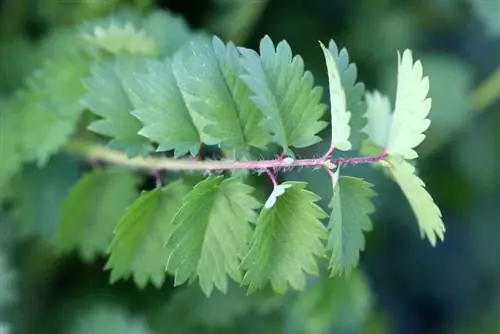
Basically, the undemanding pimpernelle thrives in almost any location and on almost any soil. However, a sunny and warm place in the garden is optimal, ideally with permeable, humus-rich and calcareous soil. The plant - like so many others - does not get waterlogged at all and should therefore be avoided. Rain protection is not necessary, quite the opposite: lots of rain and warm weather ensure a particularly intense taste.
Sowing in the garden
Because the Pimpernelle develops long, strong taproots, it is difficult to move. For this reason, you should sow them immediately at their future location in the garden. Growing it on the windowsill is not necessary and does not make sense, after all, the herb is quite insensitive to cold and can therefore be planted directly outdoors from March onwards. Draw even rows 30 centimeters apart in thoroughly prepared and loosened soil. Sow the seeds there, which are only separated to 20 centimeters after they have emerged. Only cover the small grains lightly with sifted earth or sand, as the pimpernelle is a light germinator. The substrate should be kept slightly moist until the seedlings emerge.
Tip:
The pimpernelle can be wonderfully cultivated together with other culinary herbs in a herb spiral. It is best to place them in the upper middle, where it is as sunny as possible, but the substrate is nutrient-rich and rather dry.
Sowing in pots
If you don't have a garden, you can also cultivate the pimpernelle in buckets, pots or even in the balcony box. The only important thing is that the planter is chosen to be deep rather than wide due to the long roots. Use a loose herbaceous soil that you mix with mature compost and a handful of horn shavings. Alternatively, you can also use good potting soil. Since not all seeds germinate, sow several seeds directly into the planter. These are distorted and separated as soon as the young plants have formed at least one additional pair of leaves in addition to the two cotyledons.
Tip:
Instead of sowing the pimpernelle, you can also purchase already grown plants from some nurseries and plant them. Inquire about a nursery that specializes in herbs, you will usually find what you are looking for here.
Seedling care
After sowing, the seedlings emerge after ten to 14 days, depending on the weather, sometimes even faster. As soon as the plants have four pairs of leaves, they should be separated at a distance of 20 centimeters so that the herbs that later grow like clumps have enough space. This distance also ensures that the pimpernels are in an airy position and the risk of infection with downy mildew is reduced to a minimum.
Care for Pimpernelle properly
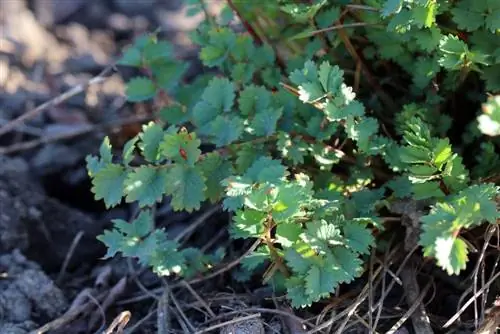
The Pimpernelle is very undemanding when it comes to care. You just have to be careful to prevent the plant from blooming: on the one hand, a flowering pimpernelle can no longer be used in the kitchen, on the other hand, the plants self-seed very quickly and then have to be painstakingly removed - even in the more remote areas of the garden. because the small nuts are spread by the wind.
Pouring
The pimpernelle needs as much moisture as possible to develop its typical aroma and for this reason it must not dry out. You should therefore water the plants, especially in very sunny locations, in a pot culture and during a warm, dry period. Always water the pimpernelle from below so as not to wet the leaves. Water droplets on the leaves act like small magnifying glasses in the sun and can cause sunburn, which manifests itself as brown spots and reduces the quality of the herb. In addition, wet leaves are at high risk of infection with downy mildew.
Fertilize
Pimpernella cultivated in pots and other planters are best fed with a liquid herbal fertilizer between March and August. Specimens in the garden receive fertilization twice a year - once in March and again in June - with mature compost and horn shavings, which are lightly worked into the soil around the root area. Water immediately after fertilizing so that the nutrients reach the roots more quickly.
Cutting
The inflorescences of the Pimpernelle must be regularly cut off before flowering in order to prevent the plant from blooming. Only then will the delicate leaves remain aromatic and can continue to be used in the kitchen. Only later in the summer can you let some of the flower heads bloom and stand - they will self-seed and thus provide the necessary offspring.
Propagate
Once you have sown the pimpernelle in the garden, you no longer need to worry about further propagation. Quite the opposite: Make sure that only a few flowers can produce seeds, otherwise your garden will soon be overgrown with this highly propagative plant.
Harvesting
If the pimpernelle does not bloom (because then the leaves lose a lot of their aroma), you can harvest the delicate leaves until autumn. However, only pick the young, newly formed leaves as the older ones become hard and bitter in taste after a while. The leaves are either used fresh or can be preserved by soaking them in vinegar orOil and freezing can be preserved. However, drying as a preservation method is not recommended as the spice then loses a lot of its aroma.
Diseases and pests
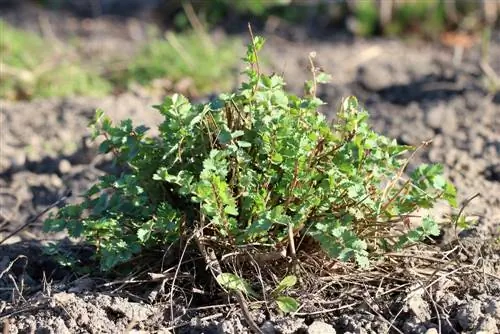
The pimpernelle is very robust and less susceptible to infestation by pests or pathogens. Especially if the plant is too close together or is damp due to frequent watering from above or constantly warm, humid weather (without the possibility of drying the leaves in between), it can be affected by downy mildew. The only thing that helps with this is pruning or treating it with fungicides, but the plant can no longer be used in the kitchen afterwards. Aphid infestations also occur more frequently, but can be easily treated.
How to avoid diseases and pest infestations:
- Make sure there is sufficient planting distance
- Avoid waterlogging, plant should be on well-drained soil
- fertilize regularly
- Water the plant only from below, do not wet the leaves
- Choose an airy, warm location - leaves can dry more quickly here
- install rain protection in continuous rain or in rainy summers
Wintering
Since the Pimpernelle is sufficiently hardy, no special instructions need to be followed for a he althy wintering.


